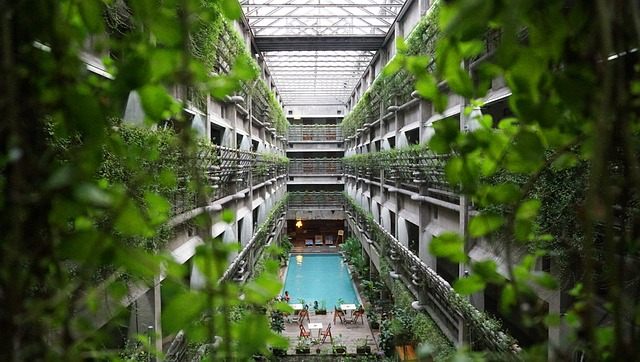Search This Blog
An Environmental website whose primary focus is to help everyone understand the impact humans have on the physical environment with resources that help us achieve what we call a safe and clean environment.
Featured
- Get link
- X
- Other Apps
Green Buildings: The Environmental Impact on Societies Worldwide
Green building practices and sustainable architecture have experienced significant growth in recent years as societies worldwide have become increasingly concerned about the environmental impact of construction and the need for more energy-efficient and sustainable solutions. This shift in mindset has led to the integration of energy-efficient designs, renewable energy systems, and smart technologies in constructing eco-friendly buildings.
One of the primary goals of green building practices is to minimize the environmental impact of the construction process and the long-term operation of buildings. This is achieved by using sustainable materials and techniques that reduce energy consumption, conserve resources, and promote healthy living environments. Energy-efficient designs play a crucial role in achieving these objectives.
Energy-efficient designs focus on optimizing a building's energy performance by reducing energy consumption for heating, cooling, lighting, and other operational needs. This can be achieved through various strategies such as incorporating proper insulation, optimizing natural lighting and ventilation, and using energy-efficient appliances and lighting fixtures. Additionally, advanced building systems, such as smart thermostats and occupancy sensors, can further enhance energy efficiency by automatically adjusting energy usage based on occupancy and environmental conditions.
Renewable energy systems are another integral component of green buildings. These systems harness renewable sources of energy such as solar, wind, or geothermal power to meet a building's energy demands. Solar panels, for example, can be installed on rooftops to generate electricity from sunlight, reducing reliance on fossil fuel-based energy sources. Wind turbines and geothermal heat pumps are also viable options for generating clean energy on-site.
The integration of smart technologies in green buildings allows for enhanced control, monitoring, and optimization of energy consumption and resource management. Building automation systems can regulate lighting, heating, and cooling based on occupancy and external conditions, ensuring optimal energy usage. Smart meters and energy management systems provide real-time data on energy consumption, enabling building owners and occupants to make informed decisions to reduce energy waste.
Beyond energy efficiency and renewable energy, sustainable architecture also considers water conservation, waste reduction, and the use of environmentally friendly materials. Water-saving fixtures, rainwater harvesting systems, and efficient irrigation systems can significantly reduce water consumption. Waste management strategies, such as recycling and composting, minimize the amount of waste sent to landfills. Sustainable materials, including recycled or locally sourced materials with low embodied energy, are prioritized to reduce the carbon footprint associated with construction.
In addition to their environmental benefits, green buildings offer several advantages to occupants and communities. These buildings provide improved indoor air quality, daylighting, and thermal comfort, which contribute to the health and well-being of occupants. They also promote sustainable lifestyles by integrating amenities such as bike storage, electric vehicle charging stations, and green spaces. Furthermore, green buildings can enhance a community's resilience to climate change and reduce its overall carbon footprint.
Government policies and certifications such as LEED (Leadership in Energy and Environmental Design) and BREEAM (Building Research Establishment Environmental Assessment Method) have played a crucial role in promoting green building practices by setting standards and providing incentives for sustainable construction. As a result, the construction industry has witnessed a substantial increase in the adoption of green building principles, with many developers, architects, and construction professionals embracing sustainable designs and practices.
Conclusion
In conclusion, the growth of green building practices and sustainable architecture has transformed the construction industry by prioritizing energy efficiency, renewable energy systems, and smart technologies. These eco-friendly buildings not only minimize the environmental impact but also provide healthier and more comfortable living and working spaces. The integration of sustainable practices in construction is vital for creating a more sustainable and resilient future for generations to come.
- Get link
- X
- Other Apps
Popular Posts
Environmentally Persistent Pharmaceutical Pollutants (EPPPs): A Growing Threat to Our Ecosystems
- Get link
- X
- Other Apps
Circular Economy Important Websites You Should Look At
- Get link
- X
- Other Apps






Comments
Post a Comment